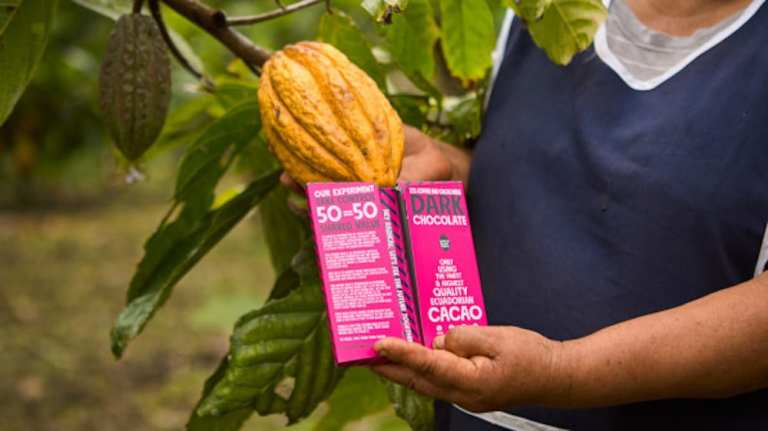There is no shortage of products designed to appeal to conscientious consumers, or marketing terms aiming to draw them in. Green, sustainable, locally sourced, fair trade, clean, socially conscious, cruelty-free – buzzwords that two decades ago were rarely seen on store shelves have become increasingly commonplace, particularly among direct-to-consumer (DTC) brands looking to capture the spend of the eco-minded shopper.
There is just one small problem, confirmable by data. Consumers’ ideals are high when they are thinking about the products and types of firms they would like to exist. Those ideals, however, tend to dramatically diminish at the moment of truth in a purchase. According to 2017 research by BBMG and GlobeScan, 65 percent of consumers reported having a strong preference for purchasing sustainable products, while only 26 percent reported actually seeking out and rewarding a firm for their green practices.
The good news, also supported by research, is that the situation has been showing signs of change over the last decade or so, as a new generation of younger, more environmentally concerned consumers are becoming the dominant spending demographic in the market. Ethical products as a category are growing sales-wise, bringing in $114 billion in 2018, a 29 percent increase over five years. Moreover, sales for products marketed as sustainable are growing approximately 5.6 times faster than their counterparts.
But sustainable products are still a small minority of the market overall, representing 16.6 percent of consumer sales in 2018. That’s an increase from the 14.3 percent stake it held in 2013, but still not quite the full market takeover one might expect given the level of buzz the segment generates, and the legion of brands selling themselves as greener, more ethical or more sustainable choices.
But according to the team at The Other Bar, the proliferation of messages about sustainability is perhaps part of the problem. Consumers have so many messages blasted at them over a series of digital channels at all times that the messages become something of an unintelligible cacophony of noise. They know some of what is marketed as sustainable actually isn’t – but that doesn’t mean there is always an easy way to distinguish what is really doing good from what merely slaps a message about doing good on its packaging. To make sustainability sticky, per the team at The Other Bar, it also must be tangible and directly accessible to consumers.
Hence the blockchain-based concept that backs The Other Bar, which is a chocolate bar built to do good for the world. Chocolate, as PYMNTS has previously reported, is a massive global industry beset by a host of troubling problems: It is opaque due to control by middlemen, it is often highly environmentally destructive and child labor is a common occurrence. Some DTC brands, notably Tony’s Chocolonely, have sought to make the industry more sustainable by cleaning up the supply chain – and making the origins of chocolate and the practices of the farms that produce it transparent to consumers.
Advertisement: Scroll to Continue
The Other Bar is taking a different approach, with a business that it describes as one part chocolatier and one part “social experiment in radical equality.” Their goal, in their own words, is “to take a bite out of poverty through the simple act of buying a chocolate bar.”
The process is pretty simple: Every bar of chocolate the firm sells comes with a code in the packaging that can be scanned, which awards the customer a single blockchain-backed token. The customer can then choose to either send the token to a farmer in Ecuador who produced the chocolate they are now eating, or they can apply it toward a discount on their next purchase. If the customer decides to donate, the funds go to a local cocoa farmer’s association, which uses the funds to plant new cacao trees. Each token is equivalent to a quarter of a cocoa-producing tree, so four chocolate bars equal one tree. The value of the tokens is funded by money that would have otherwise gone toward marketing the bars.
The Other Bar is currently a pilot program, backed by the United Nations Development Programme. The first run of the bars features 20,000 dark and milk chocolate bars that have been on sale for about a week.
Guido van Staveren van Dijk, founder of the FairChain Foundation – an organization that was established to solve inequalities in commodity production worldwide, and whose blockchain-based model for monitoring coffee production was used by the UNDP and The Other Bar to develop the pilot for the chocolate bars – believes this kind of sustainability is useful both in actually doing good for the producers, who are often left behind in the global supply chain, and in igniting real and sustainable consumer interest.
“It’s a performance-based model that delivers quantifiable proof that a plant has been bought, planted, grown and generated money for the farmer,” noted van Staveren van Dijk. “Because everything is on the blockchain, consumers can see this radical transparency in action.”
Whether that radical transparency will do more to motivate consumers to put their money where their mouth is, sustainability-wise, remains to be seen. Today, The Other Bar is only a pilot. But digital consumers like immediacy, and if the company can make consumers feel good about themselves while eating chocolate – while also benefiting the farm that grew the materials needed to make their candy bar – they might have found a practical way to use digital technology to boost sustainable commerce.




